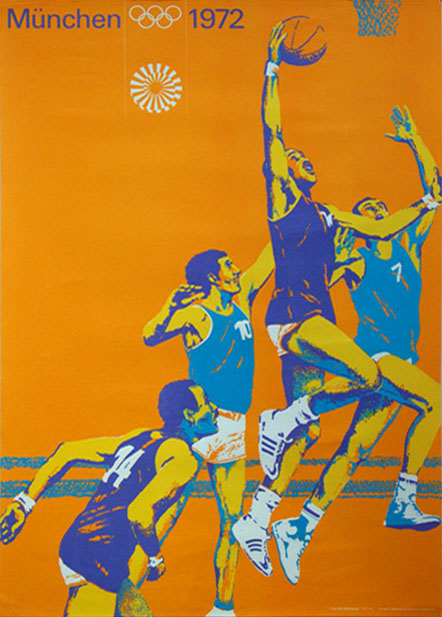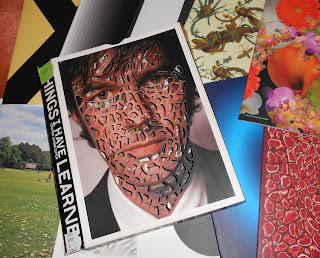
Designed by Tom Eckersley for an exhibition with the tag-line: How they brought the world to the West Coast.
I like the way the sea and sky are one, the horizon being defined by the land mass in the background. Notice the weight of the line between the beach and sea getting thinner in the distance; this is a good way of giving the picture depth whilst still keeping the simple flat colour. The white boat is also essential to the composition as it draws the eye back in to the image and breaks up the large amount of blue. The blue underlines in the bottom left also balance out the colour making it look less top heavy.
Designed by Otl Aicher for the Munich Olympics, 1972. Part of a series.
I have been interested in how I can eventually make my ideas into a set of four rather than individual pieces that don't sit well together. Here Aicher has used the posterized style of the photographs to give the posters consistency. The same font is used for each poster and although the colours change, the is a limited palette on each. The same shades are also sometimes used from one poster to the next adding to the consistency and the Olympic rings are kept a single colour as to not distract the viewer.
I like how each poster conveys the mood of the particular sport. In the first one the lines in the back ground as speed to the cyclists. In the second the shadows on the arms elongate them and exaggerate the arms extention giving the feeling of desperation to get the ball. The juxtaposition of the bodies combined with the bright colours additionally shows the energy of the moment. The third image contains much more stable shapes within its composition, for example the rectangular block colour for the body of the Archer. Again this reflects the sport shown.






























